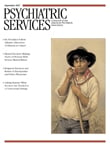Some of us tolerate ambiguity better than others, and sometimes we all must tolerate it because we simply lack the data or the necessary analytic powers to achieve the desired synthesis. Those of us who are fortunate enough to possess the talent for integrative clarity can provide major theoretical and clinical insights to the rest of us. Presumably, as a consequence of the difficult and diverse nature of the subject matter, psychiatry has had a more difficult time than the rest of medicine agreeing upon a conceptual framework. One unfortunate consequence of this predicament is that many critical formulations have been simplified to the point that they impair our capacity to conceptualize and communicate the complexities of our specialty.
In his classic work Borderline Conditions and Pathological Narcissism, Otto Kernberg helped us think in terms of organizational gradations. Concepts such as borderline character organization, although requiring more academic rigor at the front end of the learning curve, ultimately rewarded the student clinician with an elegant and formidable schema with which to understand and communicate clinical phenomena.
In Personality-Disordered Patients, Michael Stone carries on in the pedagogical tradition of Kernberg. He provides the reader with a series of rich, diverse, and astute clinical characterizations that are impressive in their scope and organization. Therapists will readily recognize their own patients in the plentiful case studies distributed throughout the book; they will gain practical insights that will help them determine which of their patients are most likely to benefit from their efforts and when psychotherapy is likely to fail.
Stone, who is a professor of clinical psychiatry at the Columbia University College of Physicians and Surgeons, clearly describes the attributes that affect the amenability of personality disorders to psychotherapy. He focuses on qualities largely within the sphere of object relations, such as the ability to think about oneself and others, to identify feelings, to be hopeful, to be capable of compassion and candor, and to be motivated for treatment. He generously shares insights he has amassed over years of practice and provides ample guidelines for evaluating patients. He pays particular attention to patients with borderline character organization and methodically identifies clusters of qualities that, although under one DSM-IV-TR rubric, prove to have varying levels of amenability to treatment.
In the final chapters, Stone address the most severe aberrations of personality and the limitations they impose on the effectiveness of therapy. What remains obvious throughout the book is the compassion he has for his patients even as he describes the phenomenology of their illnesses with the precision and rigor of a scientist.
Mental health clinicians and researchers should carefully study Personality-Disordered Patients . This eloquently written work provides a framework of practice-oriented precepts that will be of everyday use to experienced professionals, as well as to psychiatric residents and graduate students in training. It is a book to which the mental health professional will return, year after year, to validate clinical impressions, to gain assistance in conceptualizing difficult problems, and to simply be nourished and fortified.

